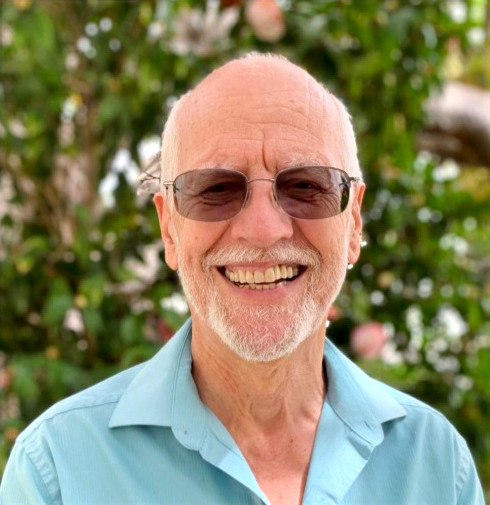- Connard Hogan

- Sep 30, 2021
- 4 min read
Updated: Aug 26, 2022

Bottom line: Like the sun's rays, human connection brings life-giving energy. So, reach for the light . . . hope waits there.
I recall an early morning, some years ago, which serves as a stark lesson for me.
I’d arrived on time, 6:30AM, before dawn had wiped away that winter’s morning darkness and the sun’s rays had chance to warm the air. My part-time counseling cohort had followed me into the Methadone Maintenance Clinic by a minute or two.
We may have exchanged hellos, I don’t recall, but he soon launched into his news, “I found a guy laying by the tracks as I came in. Checked him out. He was cold.”
I hadn’t noticed anything amiss as I approached the front door. The clinic and railroad tracks ran along opposite sides of the intervening city street. But then, I’d made a bee-line in order to avoid the cold . . . and the street out front wasn’t lit.
“Dumped?” I said.
“Yeah, probably, after an overdose.”
“Somebody dropped him there, not wanting to be implicated in drug use?” I said. Hurriedly abandoned along a railroad track like a bag of trash, I thought.
“My bet,” he said.
Damn. “What a way to go!”
Working around opioid addicts struggling to get and stay clean, the facility treatment staff were all too aware of the frequency of relapses. Known as “recidivism,” many “patients” turned serial repeaters. Such is the nature of opioid addiction, one of the most difficult of addictions to overcome, as I understand.
I could only appreciate the withdrawal process, never having done it myself. “There, but for the grace of God, go I,” as is frequently said in recovery circles. But, I knew all too well the psychological and emotion difficulties in stopping a drug habit. I’d already worked in residential drug and alcohol rehab facilities for years.
Intense counseling coupled with utilization of 12-Step program meetings offered the best option for those in recovery, as I had come to believe. Once clients “graduated” residential treatment, they were expected to continue out-patient counseling, as well as attendance of 12-Step meetings. However, in the Methadone Clinic out-patient setting, the tenuous leverage we held as staff to drive home the import of 12-Steps program participation, the need for deep introspection and emotional work, became the weak link in the patient’s recovery potential. Most arrived before the birds awakened, got their “doses” of methadone and counselor contact, usually a session of nor more than fifteen minutes before they scooted off to join the morning traffic rush on their way to scattered locations across the SF Bay Area.
Sure, the titrated (decreasing) methadone dosing regime prescribed by the clinic doctor, helped minimize withdrawal symptoms, but even with staff contact and support, relapse was as common as trees in the woods. It wasn’t impossible for a patient to succeed, but many hurdles needed to be negotiated by each patient, such as their physical discomfort and “stinking thinking” when alone. In addition, they’d need to navigate—total avoidance, unlikely—their twenty-four hour, seven-days a week environment filled with the negative peer pressure of using acquaintances or pushers, as well as other daily issues and situations, which likely got them into their predicament in the first place.
Try changing an ingrained routine, even a “simple” one entwined with a deep emotional need, and in the face of a contrary environment.No easy task, “sweat equity” required . . . an absolute necessity.
The most difficult, and disheartening, aspect for me was the work with patients in relationships with other addicts. Picture two drowning individuals clinging to one another. Yet, in the face of their obstacles, their journeys needed to be taken, and I did what I could at each contact and learned to look at the long-term, as each individual’s progress could be slow and fleeting.
So, I wasn’t too surprised to learn that someone’s time had run out.
I wonder now—as I did then—about his life as a parade of questions cross my mind. What passed through his mind as he “nodded off” into oblivion? While sprawled on the cold steel track? My best guess? He’d hoped for, and welcomed, the release from his inner turmoil and psychic pain. Maybe, even longed for the permanent escape through death. I will never know, nor will any of us.
The whole situation quite sad, I wonder if he’d felt cared about or loved . . . or who grieved or marked his loss.
I’m thankful I’d reached out when suicidal, and taken my first step towards recovery from my brand of physic pain and inner turmoil. I recall that isolation vividly. I don’t wish to die enveloped in that isolation, and now know I won’t need to do so. And it’s not that I prefer people suffer my final departure, but expect that some will, contrary to what I say or think. For me, my connection to others and relationship with the universe creates the foundation on which I stand.
The 12-Steps bookend the issue of isolation, and step meetings help counter it. Step One establishes the need to reach out, while Step Twelve emphasizes the importance to continue to do so. All the while meetings, and sponsors, support and assist those in navigating their “stinking thinking” as they work through the steps. (More on sponsors, later.)
Photo Credit: pexels - pixaby





